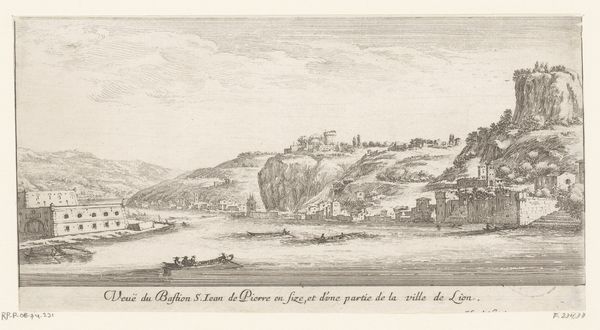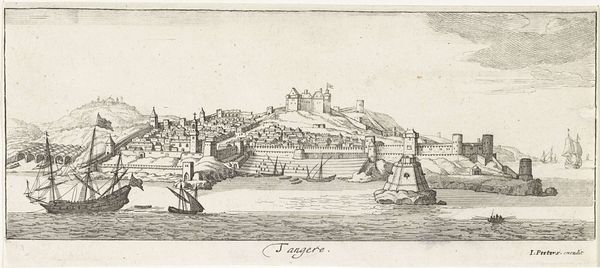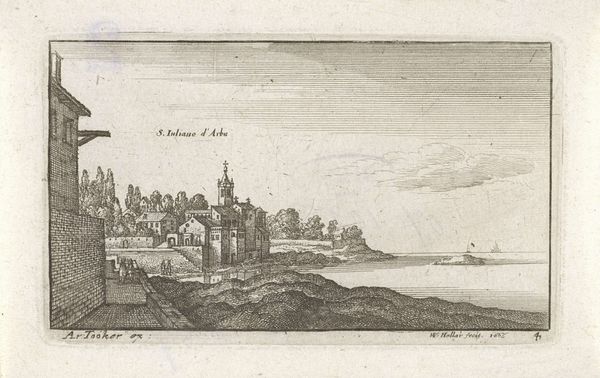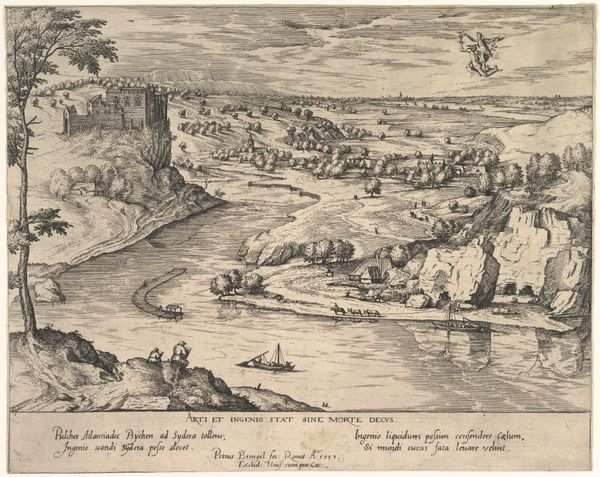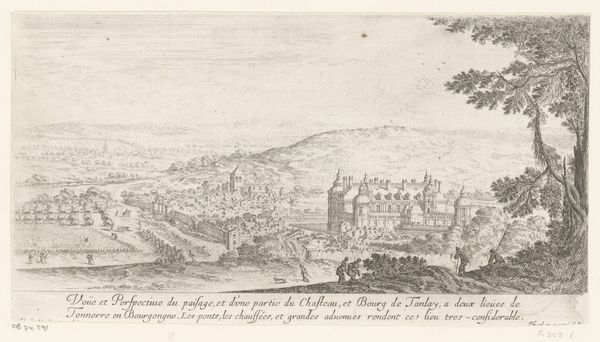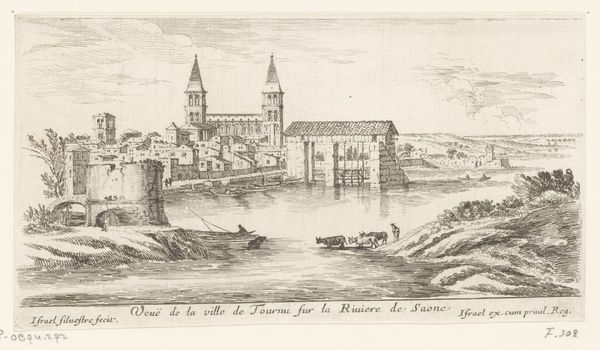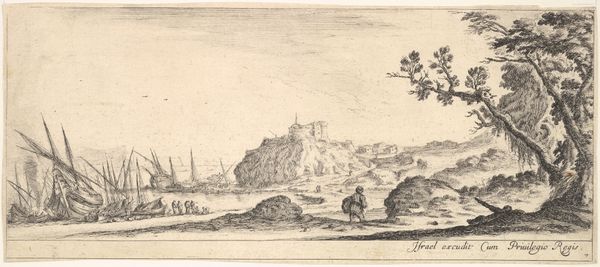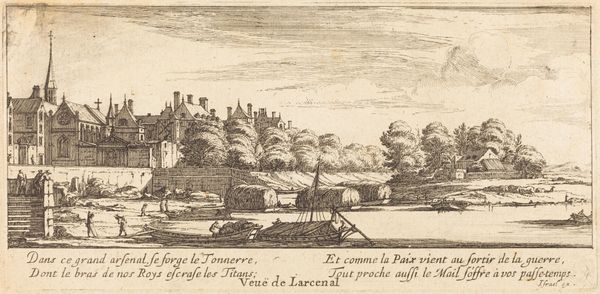
drawing, print, etching, paper, engraving
#
drawing
#
baroque
# print
#
etching
#
landscape
#
paper
#
history-painting
#
engraving
Dimensions: height 90 mm, width 173 mm
Copyright: Rijks Museum: Open Domain
Editor: So, here we have Albert Flamen's "Ruïne en brug," dating somewhere between 1648 and 1692. It’s an etching, showing a ruined castle or large building next to a bridge, all reflected in the water. There’s a strange sense of both peace and decay in this image; what do you see in it? Curator: What I see is a carefully constructed commentary on power, time, and social change during the Baroque era. Look at how Flamen depicts the ruin: it's not simply a depiction of decay, but also a stark reminder of past conflicts and the ephemerality of earthly power. How does its proximity to the figures fishing by the water impact your reading? Editor: I hadn’t thought of it that way. I guess, seeing those figures sort of makes me think of the everyman carrying on even as old regimes collapse and vanish. It suggests how life continues, regardless of crumbling castles and toppled bridges. Curator: Precisely. The landscape isn't merely a backdrop; it is a stage upon which societal narratives play out. We should question whose stories get told and remembered, and whose are erased like this castle by time. And who benefits from such erasures? Flamen’s work provokes a wider, perhaps even subversive discourse about social structures. Do you see elements that reinforce or subvert the dominant ideologies? Editor: The inscription. I think the official permission at the end challenges, a bit, what would otherwise be considered a criticism of nobility at that time, making me wonder if it does not suggest compliance or a negotiation with authority? Curator: It very well could! Power always leaves a trace, a textual signature! And the bridge, then, could signify imposed links with commerce and control rather than an opening for mutual benefit and exchange. It all underscores the necessity to examine how the past informs the present, and who is writing that history. Editor: That's a powerful reading. I'll definitely think differently about Baroque landscapes from now on. Curator: Excellent! It is in such deconstructions that we may expose a clearer reflection of our collective humanity.
Comments
No comments
Be the first to comment and join the conversation on the ultimate creative platform.

